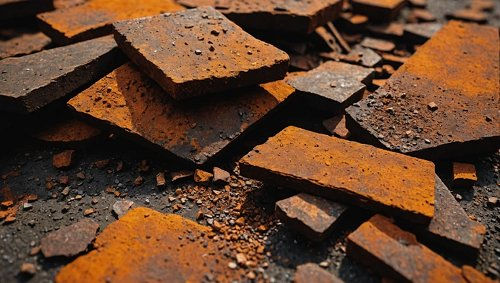Secret Lives of Sulfuric Acid Bacteria
- Sylvia Rose

- Oct 25, 2024
- 3 min read
Updated: Apr 13
Acidophillium and Acidobacillus ferroxidens bacteria thrive in harmful conditions. These microscopic sulfuric acid-producing bacteria use sulfur for energy, enabling them to flourish in places most life would perish.

Bacteria including Acidophillium spp., Acidobacillus ferroxidens, Thiothrix, and Beggiatoa spp. survive and prosper in sulfuric acid environments. They maintain internal pH levels despite surrounding acidity.
By using specific enzymes and transport proteins, they can eject protons from their cells to counterbalance the external acidic conditions. They live comfortably where other organisms would perish.

Acidithiobacillus ferrooxidans - above - (basonym Thiobacillus ferrooxidans) can be isolated from iron-sulfur minerals such as pyrite deposits. It oxidizes iron and sulfur as energy sources to support autotrophic growth, and producing ferric iron and sulfuric acid.
First isolated from soil, acid-loving bacteria are also observed to cause biogenic sulfide corrosion of concrete sewer pipes. They alter hydrogen sulfide in sewage gas to make sulfuric acid.

Acidobacillus ferroxidens is popular in bioleaching, a method to extract metals from ore using microbes. This species is often associated with acid mine drainage.
A. ferroxidens has a robust metabolism. It uses iron ions as electron donors, contributing to the mobilization of valuable metals like copper and gold from ores. These bacteria are happy in pH levels as low as 1.5.

Acidophillium survives highly acid environments with a pH of 3 or below. These bacteria are often found in sulfuric acid-rich areas such as metal mines, acidic hot springs, and regions of industrial pollution.
Classed as acidophiles, these organisms not only tolerate, but require acidic conditions for their growth. Certain species within the Acidophillium genus live in environments with a pH as low as 1.0, a super strong acid.

These bacteria are often found in settings where acid waters emerge, such as metal-rich mine drainage environments. Acidophillium species easily adapt to biogeochemical cycling in extreme habitats.
Acidophillium bacteria oxidize reduced sulfur compounds such as sulfides to produce sulfuric acid. This lowers the pH of their surroundings.

Conversely, Acidobacillus ferroxidens generates sulfuric acid as a byproduct during iron oxidation. The production of sulfuric acid helps survival, as high acidity inhibits the growth of less resilient organisms.
This gives Acidophillium and Acidobacillus ferroxidens a competitive edge in their ecosystems. They both have high-status jobs as acid producers and facilitators of metal bioleaching.

In nature, Acidophillium and Acidobacillus ferroxidens are important to nutrient cycling in ecosystems with high sulfur content. Their metabolic actions maintain nutrient balances supporting many life forms.
Industrially, Acidobacillus ferroxidens is used in bioleaching, especially for metals such as copper and gold. This bioprocess is an alternative to extract metals from low-grade ores. Bioleaching helps reduce mining waste.

Facts About Sulfuric Acid Bacteria
Extreme Survivors: The bacteria thrive in environments with a pH lower than 2.
Microbial Fuel: Both Acidophillium and Acidobacillus species have potential in microbial fuel cells, where their metabolic processes can generate electricity.
Ecosystem Builders: The bacteria aid in mineral formation, contributing to the development of biogeochemical ecosystems.
Research and Innovation: These bacteria are subjects of intense research, with scientists exploring their potential applications in waste treatment, sustainable mining practices and biotechnology.
Environmental Indicators: The presence of these bacteria often signals the geochemistry of their environment. They're biological markers for acid mine drainage and sulfur-rich ecosystems.

READ: Lora Ley Adventures - Germanic Mythology Fiction Series
READ: Reiker For Hire - Victorian Detective Murder Mysteries


